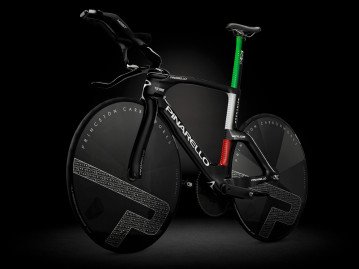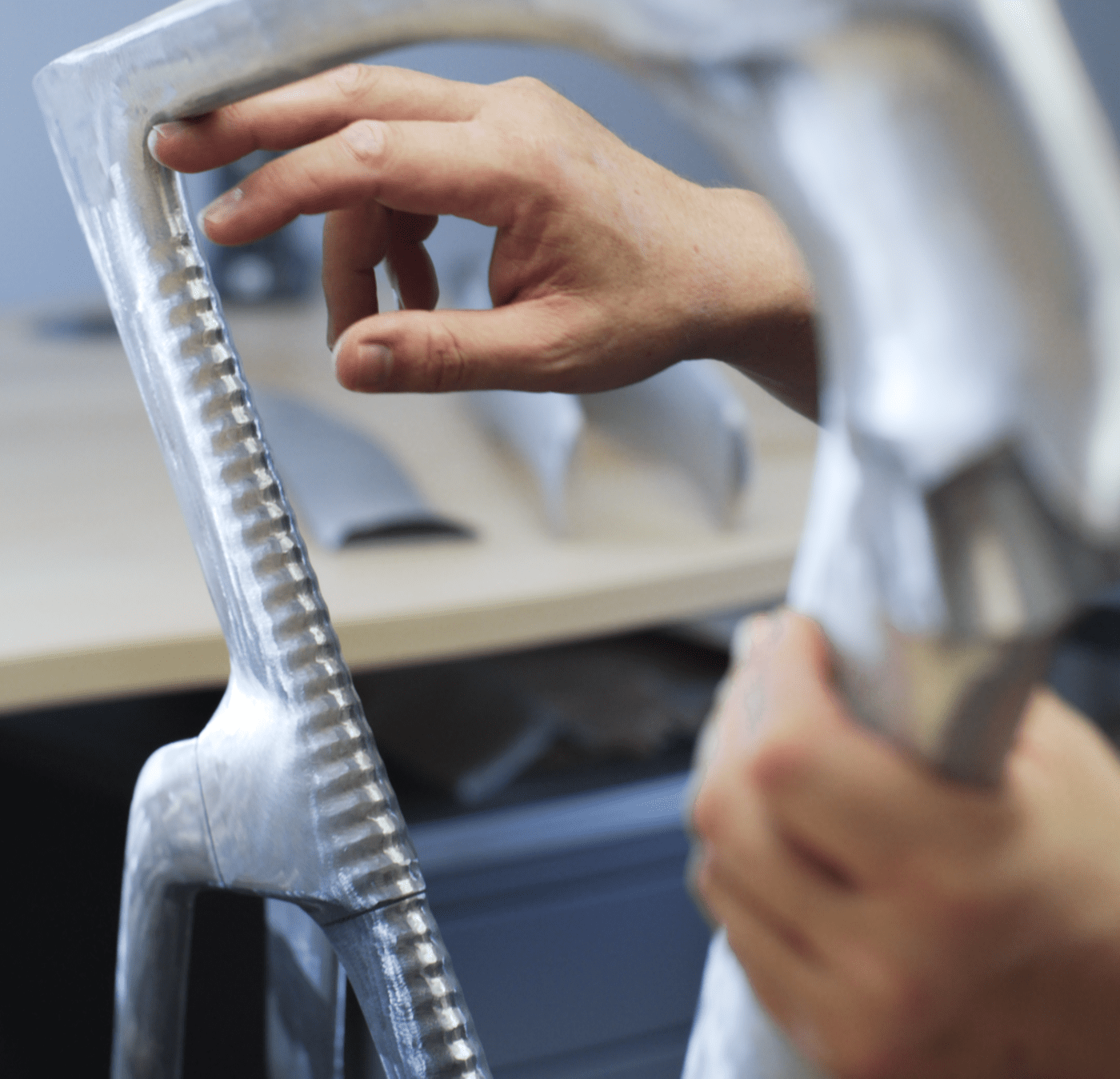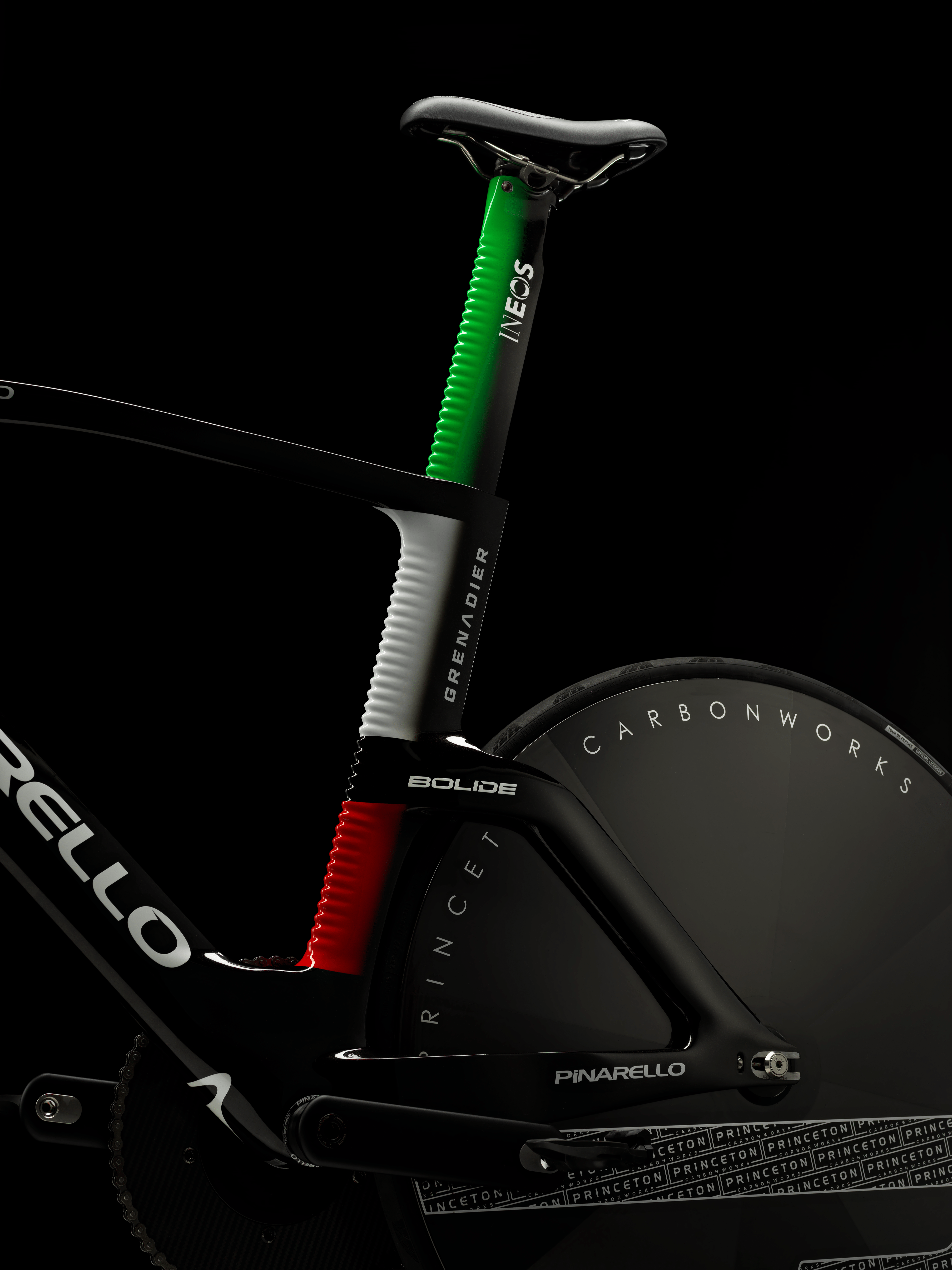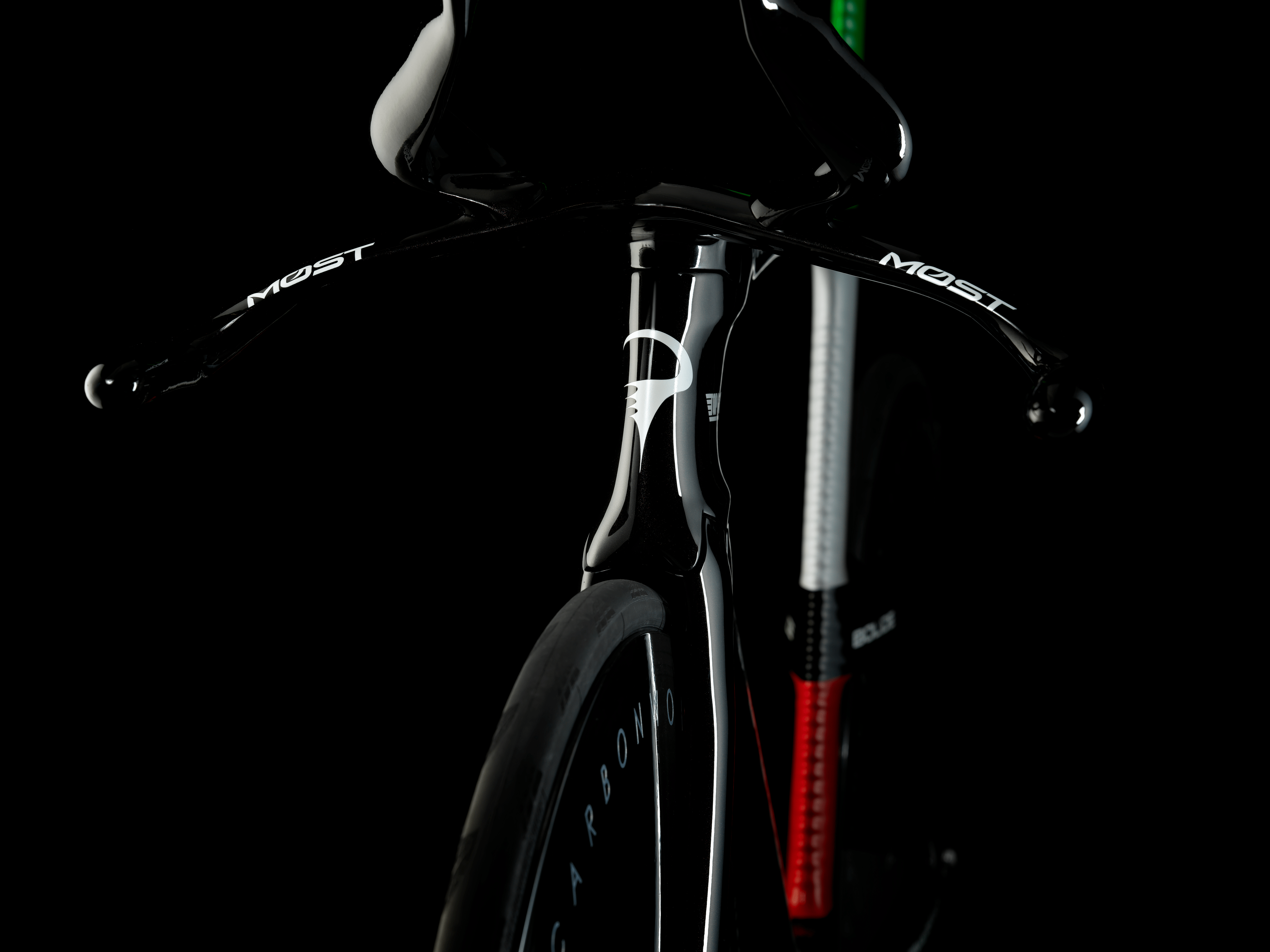
The first BOLIDE F HR 3D Replica has been specifically deisgned for Filippo Ganna's hour record attempt.
The concept behind this unique frame is to blend strength and stiffness with aero gains, relying on a production method that would allow for millimetre-perfect sizing.
The evolution of the fastest bike on the earth is represented by two additional framesets: one made of titanium and the other in carbon fiber.

The HR bike’s frame and fork were designed to take advantage of a new alloy called Scalmalloy, a high strength Scandium-Aluminium-Magnesium alloy that it is an aerospace material specifically designed for 3D printing.

The combined drag of the seat tube and seat post is almost 40% of the total drag of the frame and fork. By studying how humpback whales can do very tight manoeuvres in the oceans, researchers have found that the tubercles (the protrusions in the front of their flippers) contribute significantly to this ability. Working on this shape applied to bicicles, they have also found that ridges can minimise and reduce drag by generating streamwise vortices in the troughs between the bumps, causing the flow behind the peaks to stay attached.

The new frame has been designed to reduce as much as possible the frontal area also taking advantage of the removal of the 3:1 UCI rule. There have been some substantial gains from making the wheel hubs as well as the bottom bracket (BB) narrower than normal. The BB was narrowed down to 54mm (from 70mm), the wheel hubs from 120mm down to 89mm on the rear, and from 100mm down to 69mm on the front.